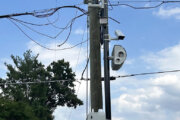Two in five of the nation’s full-time undergraduates work jobs in addition to their responsibilities as college students. Many of them land those jobs through the federal work-study program.
The work-study program is a type of need-based financial aid that allows students to work part-time jobs and earn money.
Unlike other types of federally administered financial aid, work-study funds aren’t directly applied to tuition bills. Instead, students must secure a work-study-eligible job. Once they’ve started working, they’ll receive the funds in the form of a paycheck, much like any other form of part-time hourly employment. And unlike with loans, students do not need to pay back money earned via work-study.
“This differs from the other types of aid such as scholarships or grants that are usually disbursed at the beginning of each term,” Marvin Smith, executive director of Financial Aid and Scholarships at the University of California, Los Angeles, wrote in an email. “The Federal Work-Study program encourages part-time employment while helping to reduce potential student loan debt.”
[Read: Weighing the Pros and Cons of Working While in College.]
Experts say that work-study jobs can be a good opportunity for students to gain hands-on experience in a field they’re interested in, while also helping them pay for day-to-day expenses that come up during the school year.
If your financial aid package includes a federal work-study award, here’s what you need to know about the program and how you can access the funding in your award.
Who May Qualify for Work-Study?
Students and prospective students who are interested in federal work-study must first fill out the Free Application for Federal Student Aid, or FAFSA.
When completing the FAFSA, students will be asked whether they’re interested in being considered for work-study. If they’re deemed eligible for need-based financial aid and their university participates in the work-study program, their financial aid package may include work-study funds.
The amount of money a student can receive through work-study varies depending on several factors like need, fund availability and the institution a student attends. But the average work-study award for dependent undergraduates was about $1,800 during the 2019-2020 school year, according to a 2022 report from the National Association of Student Financial Aid Administrators.
During that school year, more than 530,000 undergraduates participated in the work-study program. About 46% of dependent undergraduate recipients came from families with a yearly income of less than $42,000.
[Read: How to Pay for College Using These Overlooked Strategies.]
It’s important to keep in mind that the amount of work-study funds you see in your aid package isn’t necessarily the same as the amount of money you’ll actually receive. The number included in your award package is the maximum amount you can earn during the school year through a work-study position.
Students who decline the work-study award or fail to secure a work-study job during the school year will receive none of that money. Depending on how many hours a student works, they may only earn a portion of that award.
“It’s really important for families to understand that … if a student is given a $3,000 work-study award, it means that they can accept the work-study and earn up to $3,000,” says Julie Gross, owner of College Financial Consultants, a New Jersey-based financial aid consulting agency. “What families don’t realize is that money does not come off their bill. … Students are paid a paycheck — the money does not go toward their tuition.”
The federal program funds about 75% of the student’s wages, while the institution or employer generally pays the other 25%.
At UCLA, Smith says students can find work-study jobs through their online student portal. Many institutions have similar portals where students can search and apply for work-study jobs that are open to them.
Some schools, like the University of Wisconsin–Madison, have a direct placement program that guarantees work-study positions for eligible students. Karla Weber Wandel, the communications manager at the school’s Office of Student Financial Aid, says she recommends students looking for work-study positions start by reaching out to their university’s financial aid office.
“Since they’re the ones offering the dollars, they usually have good connections of where you can earn them,” she says.
How Does Work-Study Work?
Work-study-eligible students can take on a wide range of jobs through the program.
“The different types of categories of work-study jobs include clerical/office, computer/tech support, research/lab assistants, tutors and various customer service positions, to name some of the most popular ones,” Smith says.
Experts note that available jobs tend to vary by institution. However, it’s common for work-study-eligible students to take on roles as administrative support, research assistants and in restaurants or dining halls on campus.
Job availability is highest at the beginning of the school year. Students who want to make full use of their work-study funds should begin applying early in the school year — when there are more options — to secure a job.
While most work-study jobs are on-campus positions, Weber Wandel notes that students also may earn work-study funds off campus. The government requires colleges to set aside at least 7% of their work-study funding for off-campus positions that benefit the local community. Some typical examples of off-campus work-study positions are tutoring in a family literacy program and working in child care with a nonprofit organization.
[Read: An Ultimate Guide to Understanding College Financial Aid.]
As for payment, students work for an hourly wage that typically starts at the federal or local minimum wage. Work-study jobs typically require students to work between 10 and 20 hours per week.
Depending on the institution and the type of job, students may be able to earn an even higher hourly rate. At Columbia University in New York, for example, students may be able to earn up to $23.50 per hour through a work-study job. However, it’s important to remember that students’ work-study earnings cannot exceed the amount of funds allotted to them in their financial aid package.
Additionally, the amount of money a student earns through work-study will not be included in their total income for future school years, so students shouldn’t worry about their work-study earnings affecting their future financial aid offers.
Work-Study Can Boost Future Earnings
Some studies have shown a future earnings boost for students who work during college.
A 2016 report published by the Center for Analysis of Postsecondary Education and Employment found that, although first-year students who worked a work-study job had a slightly lower GPA than their peers at the end of the school year, they also had earned more credits, on average. The researchers suggested that the earnings from work-study could be used to pay for additional credits, allowing students to graduate earlier and save on tuition.
Weber Wandel adds that work-study positions are an excellent way for students to gain practical experience in a field they are interested in pursuing later in life. She says that some of the work-study employees she’s worked with in her office have gone on to pursue careers as financial aid officers after graduating.
“It can be an interesting stepping stone to a career that you didn’t know you were interested in because you landed in an office on campus,” she says.
More from U.S. News
How to Find and Secure Scholarships for College
Ways to Save for Your Child’s College Education
College Tuition Payment Plans: A Guide
How Work-Study Can Make College More Affordable originally appeared on usnews.com







